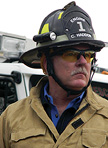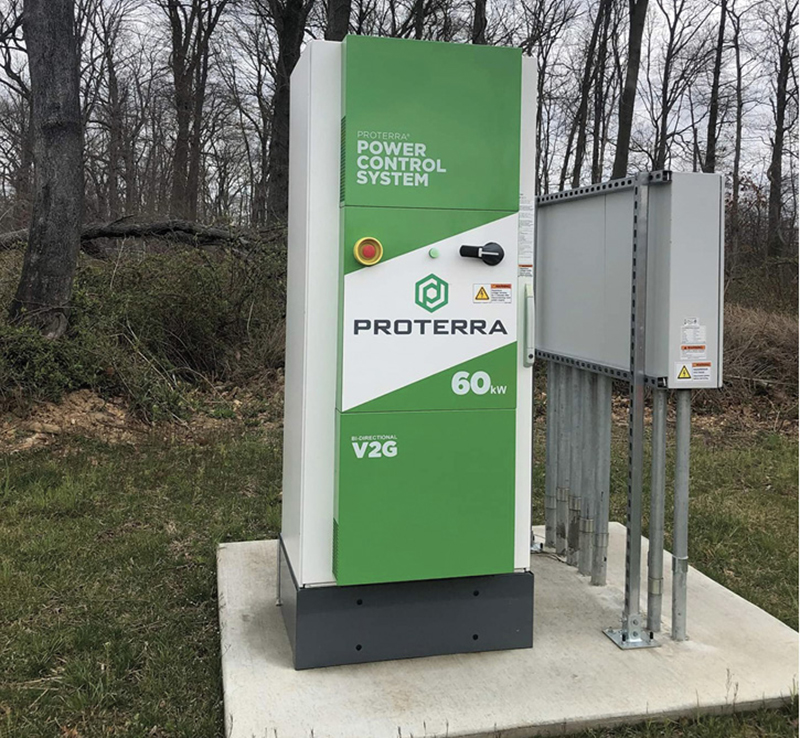Currently, there are lots of conversations being had in firehouses over the topic of electric vehicles and electric vehicle fires. At the center of these conversations are the concerns over the serious challenges we face while trying to extinguish these car fires.

Inaccessibility to the battery encasement, the huge amounts of water required, and the seeming endless rekindles are just a few of the obstacles we face. Another looming issue is the extremely toxic smoke and flying molten metals that are byproducts of these electric car fires.
I’ve seen a number of new products on the market lately that promote being able to help us with these aforementioned challenges but, quite frankly, if these products don’t help to lower the autoignition temperature of the burning (thermal runaway) lithium-ion battery itself, none of them can help alleviate these struggles.
As if these electric passenger vehicles and light-duty trucks aren’t enough to deal with, we need to get ready for their big brothers—electric commercial and fleet vehicles.
Related Articles:
To the Rescue: Today’s “Heavy” Vehicles and Their Rescue and Training Challenges
To the Rescue: Managing, Maintaining, and Mitigating New Rescue Technology
To the Rescue: New Vehicle Fires—What You Don’t Know Can Kill You
I routinely get calls from fire departments about an experimental electric bus here or a “one-off” electric garbage truck there, but the fleets of these vehicles are arriving everywhere now, and we are being caught flatfooted. Just last week, I got a call from a brother who told me about 10 electric school buses that were just delivered to his service area (photos 1-2). I’m presently working with an EV manufacturer that is about to start delivering fleets of large electric delivery vans to a company that we all order lots of online products from.
Not only do we have the known fire and toxic products of combustion hazards that occur with these types of vehicle fires, but we also have the unknown hazards associated with the payloads of these trucks and vans. It’s not inconceivable these days to have a large electric delivery van filled with lithium battery-powered phones, toys, computers, or scooters.

1 Fleets of large electric commercial vehicles, like these school buses, are arriving all over the United States. (Photos by Aaron Heller.)

2 Exercise caution when figuring out where electric vehicle charging stations are located.
We’ve all been hearing about them coming, but now all electric fire apparatus are being delivered to firehouses across the country. I have absolutely nothing against electric fire apparatus; however, I can’t help but wonder how fire departments are going to manage the risk posed by these trucks. When and where will they be charged? Will they be charged inside of the firehouse? How will extreme cold or hot weather climates affect their performance or range? Are they any more or less susceptible to catastrophic thermal runaway and resulting fires than any other electric vehicle?
When we look at commercial electric vehicle fleets, such as taxi cabs, it is important to look at where we find large gatherings of these cars—such as parking garages, airport terminals, and large public gatherings. The other day, I saw an article about two electric passenger cars that collided in a parking garage and caught fire.
Something that not too many folks understand is that these EV fires burn so hot and so long that it doesn’t take more than one or two of them on fire in a parking structure to quickly compromise the integrity of the structure itself. The thought of this type of fire scenario occurring at an international airport terminal is chilling. If you also add the toxicity of the smoke and the number of travelers that could be quickly exposed to it, you realize that this is the stuff found in the plot of Hollywood disaster movies.
Remember, too, this scenario really only involves passenger car type vehicles. Imagine adding a number of burning large commercial electric vehicles to a scene. Are we ready, equipped, prepared, and trained for responses such as these?
Exposures such as residential garages, homes, and neighborhoods are all at risk. It’s not unthinkable for us to get called to an EV car fire in an underground parking structure of an apartment building or condominium complex. Electric vehicle charging stations are being installed in these same apartment and condo complexes as we speak. Unfortunately, commercial sprinkler systems are no match for an electric vehicle battery fire in full thermal runaway. Remember, too, that these are considered Class D (combustible metal) fires. Even if water from the sprinkler systems could get to the seat of the fire, what happens when water comes in contact with burning combustible metal? Boom.
Remember, foam and water are contraindicated for use on these types of fires. Dry chemicals and physical suppression do absolutely nothing to reduce the autoignition temperature of these fires. The only way to extinguish one of these battery fires is to reduce the temperature below the autoignition temperature of the battery, roughly 300°F, and keep it reduced. Failure to reduce that temperature will almost certainly result in multiple reignitions.
I’m not suggesting the sky is falling. I’m not worried about the sky falling. I am, however, worried about parking structures and apartment buildings falling.
It has been quite slow in coming, but there are solutions to these problems. One of them is the new National Fire Protection Association Standard 18A (2022), Standard on Water Additives for Fire Control and Vapor Mitigation. In the new standard, you will find criteria and testing standards for those water additives that claim to be effective on Class D and lithium-ion battery fires. I have written much about my belief in and great experiences with a true encapsulating agent (water additive) for many years now. This technology is used extensively in other countries but, like many other things in the American fire service, we tend to resist change or try new products.
With the lack of success that we seem to have fighting these electric vehicle fires, it sounds like it may be time to look at new options.
CARL J. HADDON is a member of the Fire Apparatus & Emergency Equipment Editorial Advisory Board and the director of Five Star Fire Training LLC, which is sponsored, in part, by Volvo North America. He served as assistant chief and fire commissioner for the North Fork (ID) Fire Department and is a career veteran of more than 25 years in the fire and EMS services in southern California. He is a certified Level 2 fire instructor and an ISFSI member and teaches Five Star Auto Extrication and NFPA 610 classes across the country.

